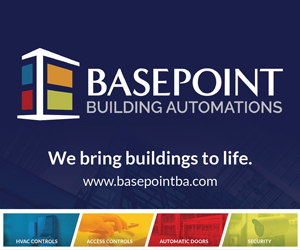Putting the squeeze on disease

.floatimg-left-hort { float:left; } .floatimg-left-caption-hort { float:left; margin-bottom:10px; width:300px; margin-right:10px; clear:left;} .floatimg-left-vert { float:left; margin-top:10px; margin-right:15px; width:200px;} .floatimg-left-caption-vert { float:left; margin-right:10px; margin-bottom:10px; font-size: 12px; width:200px;} .floatimg-right-hort { float:right; margin-top:10px; margin-left:10px; margin-bottom:10px; width: 300px;} .floatimg-right-caption-hort { float:left; margin-right:10px; margin-bottom:10px; width: 300px; font-size: 12px; } .floatimg-right-vert { float:right; margin-top:10px; margin-left:10px; margin-bottom:10px; width: 200px;} .floatimg-right-caption-vert { float:left; margin-right:10px; margin-bottom:10px; width: 200px; font-size: 12px; } .floatimgright-sidebar { float:right; margin-top:10px; margin-left:10px; margin-bottom:10px; width: 200px; border-top-style: double; border-top-color: black; border-bottom-style: double; border-bottom-color: black;} .floatimgright-sidebar p { line-height: 115%; text-indent: 10px; } .floatimgright-sidebar h4 { font-variant:small-caps; } .pullquote { float:right; margin-top:10px; margin-left:10px; margin-bottom:10px; width: 150px; background: url(http://www.dmbusinessdaily.com/DAILY/editorial/extras/closequote.gif) no-repeat bottom right !important ; line-height: 150%; font-size: 125%; border-top: 1px solid; border-bottom: 1px solid;} .floatvidleft { float:left; margin-bottom:10px; width:325px; margin-right:10px; clear:left;} .floatvidright { float:right; margin-bottom:10px; width:325px; margin-right:10px; clear:left;} With the right data, Steve Flood says, he can tell you which of your employees are likely to be the next victims of serious medical conditions.
Flood, a senior vice president with Holmes Murphy & Associates Inc., can also tell you about a particular wellness program his company has evaluated, one that has helped hundreds of people who were “ticking time bombs” to revise their lifestyles before they ended up in the hospital.
Holmes Murphy is assisting employers who are serious about improving their workers’ health and reducing health-care costs in finding some “best-of-class” solutions, Flood said. And some of Iowa’s largest companies have already saved millions of dollars in health-care costs and premiums by following the benefits broker’s advice.
“Really, what we’re doing is trying to produce hard data – we can’t find any (existing data) out there – on what programs work and to what extent, and how many dollars they really save, hard dollars,” Flood said. “And obviously, (it’s) not having employers spend money on something we know doesn’t work. Our model is bringing them best-of-class screenings and best-of-class interventions.”
Best-of-class
To do that, Holmes Murphy is systematically testing wellness programs that third-party providers offer, using measures such as cholesterol counts, blood-sugar levels and other biometric data gathered from blood samples of participating employees. By looking at five key indicators, Holmes Murphy can identify employees who have Metabolic Syndrome, a group of risk factors that occur together and that increase the risk of developing heart disease, stroke and diabetes. (See box.)
The first such “best-of-class” intervention that Holmes Murphy has identified, called Naturally Slim, focuses on modifying people’s attitudes and behavior related to eating. In an ongoing study involving 30 employers from around the country, Holmes Murphy found that 49 percent of some 1,500 employees with Metabolic Syndrome who went through the Naturally Slim program had completely eliminated their risk factors by the end of the 10-week program.
Based in Garland, Texas, Naturally Slim Inc. has approximately 100 corporate customers. Among its clients is Health Care Service Corp., a Blue Cross and Blue Shield licensee that serves 12.4 million members in Illinois, New Mexico, Oklahoma and Texas. Closer to home, one of Naturally Slim’s biggest clients is West Des Moines-based Hy-Vee Inc., which offers the course to all 43,000 of its employees.
According to a study by the American Medical Association, about 47 million Americans have Metabolic Syndrome. A study in 2006 found that people with that condition incur an average of $6,528 in medical costs annually, twice the average cost of someone without those risk factors.
Wellness programs that don’t evaluate changes in individuals’ biometric measures that indicate Metabolic Syndrome are missing the boat, Flood said. Most programs will calculate an average improvement or “wellness score” of an employee group, but not track improvement on an individual basis, which can provide misleading results, he said. Additionally, many assessments rely on self-reporting by employees, for whom a financial incentive may be riding on whether they provide the expected answers, he said.
Rather than simply calculating the average improvement for all employees, Holmes Murphy is comparing the biometric test results for individual employees before they participate in the wellness program to their results after completing the program.
Other wellness program providers that Holmes Murphy will evaluate this year, Flood said, include Mercy Medical Center’s Healthy Living Centerin Clive, and Preventative Health Group Inc., a Clive-based company that offers wellness and fitness programs.
Companywide rollouts
Hy-Vee, a Holmes Murphy client, tested the Naturally Slim program last year with 300 employees who needed to improve their test results to qualify for health-premium discounts. The results were eye-opening, said Sheila Laing, Hy-Vee’s vice president of human resources.
“At the end of the pilot, we had 46 percent of those employees eliminate a risk factor, and we had 76 percent reduce a risk factor,” Laing said. “We’ve never had that kind of success before with a program.”
Since then, 700 more Hy-Vee employees have gone through the Naturally Slim course, with a similar success rate, she said. Hy-Vee recently sent a letter to each of its 43,000 employees throughout its eight-state operating area, offering the online course to each of its adult workers. By this summer, the company plans to begin offering the program for sale to its retail customers through its in-store nutritionists, Laing said.
The Naturally Slim class is one element of a comprehensive wellness program Hy-Vee has developed, Laing said. Last year, the companywas able to return more than $2 million to its employees in the form of incentive payments for participating in its wellness program, she said.
Because of its wellness program, Hy-Vee employees overall have had fewer hospitalizations and shorter hospital stays, which has helped reduce costs, Laing said. The West Des Moines-based supermarket chain was also able to use the savings realized from its wellness program to provide employees a two-week break from health insurance premiums last year during the holidays,she said.
In 2009, Hy-Vee screened more than 11,400 of the 14,000 employees in its group medical plan. In addition to a blood draw for biometric screening, each employee must complete a healthy lifestyle assessment annually and participate in at least two activities during the year, such as a fitness or volunteering event.
Another large Holmes Murphy client, Davenport-based Genesis Health System, has obtained similar results by using Naturally Slim. Forty-eight percent of participants in a pilot group two years ago eliminated their risk factors for Metabolic Syndrome, said Steve Johnson, director of compensation and benefits for Genesis. And like Hy-Vee, Genesis is taking the program beyond its work force. Genesis is now introducing it communitywide in the Quad Cities.
“We already have an arm of Genesis that offers wellness,” Johnson said. “(Naturally Slim) is now a part of their portfolio, and a very large part of their portfolio.” “It’s attractive to employers when you can offer something to them that works and you can prove it.”
Prove it
The lack of hard data has been a significant weakness of wellness programs, Flood said. Holmes Murphy has found that many programs are “fluff and feel-good” regimens that, when measured objectively, aren’t effectively reducing employees’ risks for serious health problems.
“Most of the whole wellness (effort) has been focused on dissemination of information and awareness,” he said. “Historically, it’s never really been focused on return on investment, and today I think it’s still that way. “What we’re finding now, more than ever, is employers are saying, ‘You know what, I’m spending a whole bunch of money for a wellness program, and my claims costs are still going up, and my people are still getting sick. I don’t know that it’s working, and nobody can prove to me that it is working.’ And we’re saying the exact same thing to wellness companies, and they can’t prove it, either.”
The simplicity of Naturally Slim is probably its biggest strength, Johnson said.
“It’s a lifestyle change that’s can be comprehended by a large group of people,” he said. “You’re just learning how to eat differently. It works and I think it works better than anything I’ve run into.”
What about those employees who didn’t improve?
“In our case, they get to do it again,” Johnson said. He noted that employees can opt out if they can prove that hereditary factors or medications they are taking prevent them from improving their screening numbers.
“We’re kind of hoping that for people who really need to do something, they’ll get tired of (taking the class) and pay attention. And I would anticipate over time there would even be a little bit of peer pressure.”








